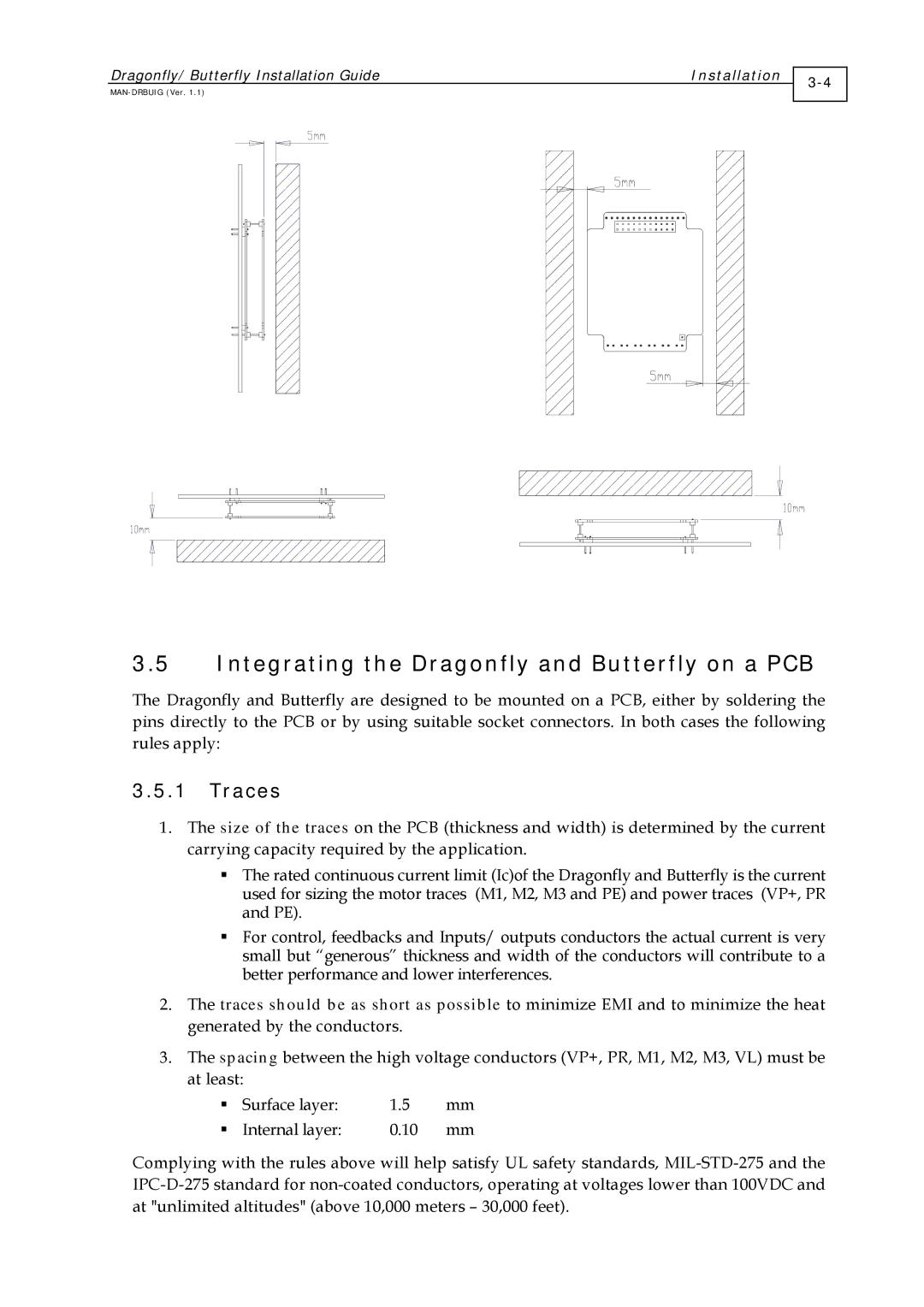ExtrIQ Dragonfly/Butterfly, BUT- X/YYY, DRA- X/YY specifications
Elmo DRA-X/YY, BUT-X/YYY, and ExtrIQ Dragonfly/Butterfly are innovative industrial communication and control solutions designed to enhance automation processes. These systems are characterized by their cutting-edge features, advanced technologies, and robust characteristics that cater to diverse industrial applications.The Elmo DRA-X/YY series stands out with its high-performance control capabilities, specifically tailored for motion control applications. It supports advanced communication protocols, enabling seamless integration with various automation systems. With its compact design, the DRA-X/YY series is designed for flexibility, allowing users to implement it in space-constrained environments. Additionally, its real-time capabilities ensure precise control, essential for applications requiring high accuracy and responsiveness.
The BUT-X/YYY series expands Elmo's offerings with enhanced motion control functionality. This system is equipped with advanced feedback mechanisms, providing users with real-time monitoring and control over their processes. The integration of machine learning algorithms into the BUT-X/YYY enhances adaptability, allowing it to optimize performance based on real-world data. This series is particularly beneficial for industries that require intelligent automation and the ability to adjust to changing operational demands.
ExtrIQ's Dragonfly and Butterfly systems are built for flexibility and scalability, making them suitable for a range of applications from manufacturing to robotics. The Dragonfly features a unique modular design, allowing for easy upgrades and expansions. Its embedded IoT technology ensures connectivity with cloud-based platforms, facilitating remote monitoring and troubleshooting. The Butterfly system complements the Dragonfly with its focus on wireless communications, providing seamless data transfer across different devices without the constraints of wired connections.
Both the Dragonfly and Butterfly utilize state-of-the-art sensor technology to collect real-time data, which can be analyzed to enhance operational efficiency. Their robust security protocols ensure data integrity and protection against cyber threats, making them reliable solutions for critical industrial sectors.
In summary, Elmo DRA-X/YY, BUT-X/YYY, and ExtrIQ Dragonfly/Butterfly systems represent the forefront of industrial automation technology. Their advanced features, including real-time control, modular designs, and enhanced connectivity, empower industries to achieve higher levels of efficiency, adaptability, and security in their operations. As industries continue to evolve, these technologies stand ready to meet the challenges of the future, driving innovation and excellence in automation.

